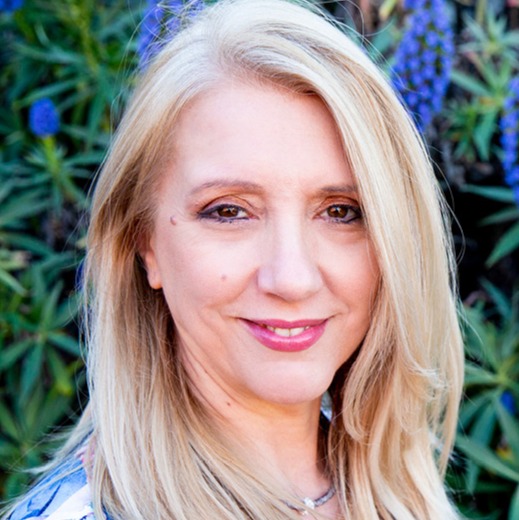
It’s inevitable to age, no matter how resistant we may be to the idea of growing old. All too often, the older members of society seem to diminish as their roles of caregivers and providers slowly drift to a close. These people are tucked away, and even seemingly forgotten, as are all the years of wisdom and experience.
While modern society definitely has its perks, such as medicine and technology, we have also lost something as we’ve reshuffled our lives to meet the challenges and living conditions that exist today. Historically, elders in the community helped transfer knowledge and skills to the younger generations.
Senior family members would live with children and grandchildren, allowing kids to interact with older generations. Unfortunately, this living structure is becoming less common, and the impact is being felt across all generations.
Improved technology and medical care mean people are living longer. One research study estimated there is more than a 50% chance that life expectancy for women in the UK will pass 90 years of age by 2030. The authors also predict the gap between male and female life expectancies will continue to shrink.1
The nature of jobs and the workforce has caused drastic changes to family structures. Many families can no longer survive on one income, and because people may relocate fairly frequently for work, senior family members are often left behind, so children no longer get to live near their older relatives. Both groups are missing out on the benefits of learning from each other.
Parents may not always have a choice in where they live--they have to follow the job markets and many other factors decide where we live, including the cost of living, the quality of schools and the availability of affordable housing.
Intergenerational programs hope to bring young people and the elderly back together in an environment where everyone can experience the positive benefits, increasing agility and adaptability and raising the expectations for learning.
Benefits include:2
Anyone who stops learning is old, whether at twenty or eighty. Anyone who keeps learning stays young.
Henry Ford
A research study examined over 200 adults between the ages of 60 and 90 who were asked to engage in various activities for 15 hours a week for a three-month period. The activities included learning something new (such as photography or quilting), doing something familiar (playing or listening to music, completing puzzles), or spending time in social activities such as field trips.
After the three months had passed, scientists found the first group (those who had learned something new) showed memory improvements compared to the other two groups. The study reiterates how important it is for us to add something mentally challenging and unfamiliar to our lives. Researchers hope future studies can shed more light on the benefits of learning over a long-term period and the link between slowing the rate of brain aging and lifelong learning.3
Even when families try hard to stay together, a financial or medical concern may make this impossible. But this doesn’t mean older people and younger people can’t work together. Seniors who regularly work with children burn up to 20% more calories per week, perform better on memory tests than their peers who do not volunteer and are less reliant on canes or walkers.
Elders with cognitive impairments such as dementia experience an increase in positive effects compared to those who do not interact with kids.
Children who work with seniors have better attitudes about aging, increased problem-solving skills, higher reading scores and are less likely to use drugs and alcohol or skip school. Having a positive role model shows children how everyone can be a contributing member of society, no matter their age.4
Keeping our brains young is key to making better decisions as we age. Aging is a major risk factor for diseases of the brain, and since we cannot halt the inevitable march of time, we should do everything we can to keep our brains young and agile.
Giving our seniors a voice again, and putting value to years of experience and wisdom can ensure this information is not forever lost but is instead passed down to instil a love of learning in our younger generations.
Adaptability doesn’t have to be forgotten as leaders age, and we can keep our minds agile and ready to make good decisions. Learn more about keeping your brain young despite the challenges we face today.
Citations:
These Stories on Adaptability

Founder & CEO
About my Brain Institute
Scientist, educator, author, speaker, coach, award-winning leadership specialist, filmmaker and creator of the i4 Neuroleader Model & Methodology.
Silvia's scientific background and curiosity about the human brain led her to a decade long journey of research into optimal brain functioning and the application of neuroscience in leadership and daily life. Her past and current roles have uniquely prepared her for the current undertaking, that of leadership activist & change agent.
Silvia Damiano founded The About my Brain Institute in 2009, with the purpose of democratising leadership & neuroscience. She has a passionately held belief, that leaders in our 21st century global economy and their organisations must radically change long-held ideas of what constitutes effective leadership
In her ground-breaking books ‘Leadership is Upside Down’, ‘Brain-Friendly Leadership’ and the 2018 documentary ‘Make Me A Leader’, Silvia provides both compelling evidence and explores the importance of leadership in our personal and professional lives and what it takes to develop the human behind the leader.
Silvia has worked in different countries, across many industries, helping teams and organisations improve business performance. Silvia’s clients have described her as a passionate, dynamic, a highly experienced speaker and master facilitator on the topics of Emotional Intelligence, Cultural Change, Neuroleadership & Engagement.
Silvia is passionate about leaving a legacy of well-rounded leaders who can act and decide in a way that better serves humanity. Her clients include Microsoft, Australian Stock Exchange, NSW Government, VISA, Fuji Xerox and Manpower amongst many other global companies.
Monday to Friday
9:00am - 5:00pm (AEST)
Sydney, Australia
We reply within 48 hours!
General Business Enquiries:
hello@aboutmybrain.com
Technical Support:
support@aboutmybrain.com
No Comments Yet
Let us know what you think